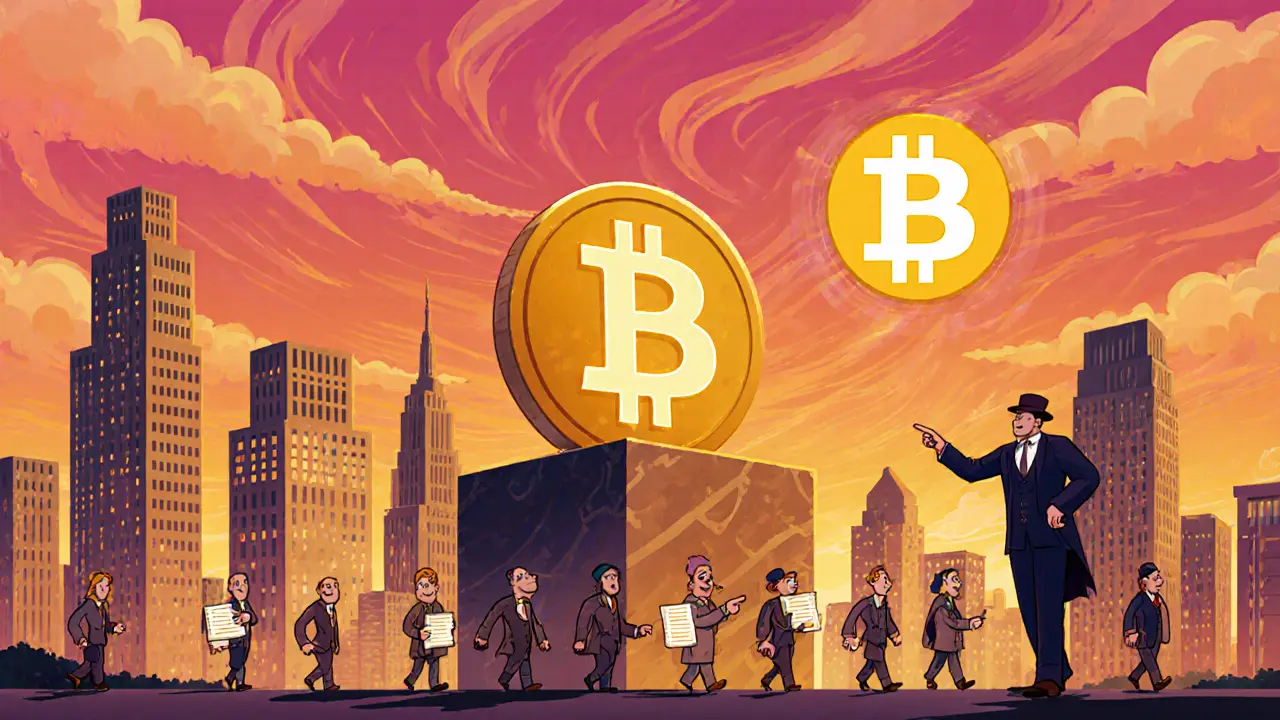DeFiChain Airdrop Guide & Latest Opportunities
When talking about DeFiChain airdrop, a free token giveaway that runs on the DeFiChain blockchain, typically rewarding early adopters or community participants. Also known as DFI Airdrop, it blends token distribution with network growth incentives. DeFiChain, a blockchain focused on decentralized finance applications, uses a proof‑of‑staking model and supports custom tokens and airdrop, the method of sending free crypto tokens to qualifying wallets as a marketing or community‑building tool. These three pieces fit together: the DeFiChain airdrop encompasses token distribution, the airdrop requires a valid wallet address, and DeFiChain’s smart‑contract layer enables automated rewards.
Why the DeFiChain Airdrop Matters
First off, airdrops are more than just free money. They signal a project’s confidence in its tokenomics and help bootstrap liquidity. On DeFiChain, each airdrop ties back to a specific on‑chain event—like staking DFI, providing liquidity on a DEX, or completing a KYC checkpoint. This creates a direct link between user activity and network health. In practice, that means if you lock DFI in a liquidity pool, you may earn a chunk of the new token without paying gas fees. The reward structure also influences market sentiment; a well‑executed airdrop can lift the token’s price and draw new investors.
Security is a big part of the equation. Many newcomers make the mistake of storing seed phrases in plain text or sharing private keys to claim an airdrop. A solid understanding of wallet safety—like using hardware wallets or encrypted backups—keeps your assets safe while you chase the free tokens. The recent “What Is a Seed Phrase in Cryptocurrency?” guide on our site breaks down how to protect that critical piece of data. Pair that knowledge with the steps we’ll outline here, and you’ll avoid the common scams that plague the airdrop space.
Eligibility criteria differ from one airdrop to the next. Some DeFiChain campaigns target early‑stage users who held DFI before a certain block height. Others focus on participants who completed specific tasks on partner platforms, such as swapping on a decentralized exchange (DEX) like SundaeSwap or MintMe. Understanding the snapshot date—when the blockchain records who qualifies—is crucial. Miss it, and you lose the chance. Our collection includes a detailed review of the SundaeSwap DEX, which shows how DEX activity can unlock airdrop eligibility on related chains.
Claiming the tokens is usually a two‑step process: first, verify you meet the criteria; second, submit a claim transaction using a supported wallet. Most DeFiChain airdrops provide a web portal where you connect your wallet, sign a message, and receive the tokens directly into your address. The portal often warns you against phishing sites that mimic the official claim page. For example, the “NZT ExzoCoin 2.0 DEX Airdrop” article warns readers about fake claim URLs and shows how to double‑check the domain before entering any data.
From a market perspective, each airdrop adds circulating supply, which can dilute price if demand doesn’t keep up. However, DeFiChain’s design includes built‑in burn mechanisms that offset inflation. When a new token is airdropped, a portion of the existing DFI supply may be burned, creating a net neutral effect. This dynamic is explained in the “Priority Fees & Miner Tips” guide, where we discuss how fee structures and token burns interact on proof‑of‑stake networks.
Comparing DeFiChain airdrops with those on other chains helps you choose where to focus your effort. The “SENSO Token Airdrop 2025” article outlines a BSC‑based giveaway that required staking on the Sensorium platform, while the “Tacocat Token (TCT) Airdrop Guide” details a Binance Smart Chain meme‑coin snap. Both offer valuable lessons: watch for tokenomics that align with long‑term utility, and beware of projects that promise huge rewards without a clear use case.
Timing matters too. Airdrop announcements often drop alongside major network upgrades or partnership launches. Keeping an eye on DeFiChain’s roadmap—like upcoming DEX integrations or governance votes—lets you anticipate future airdrop windows. Our “AI Blockchain Integration” piece highlights how emerging AI‑driven tools might soon be part of DeFiChain’s ecosystem, potentially spawning new reward programs for data contributors.
Finally, after you claim your tokens, consider how to manage them. Some airdropped assets become tradable on popular exchanges, while others stay locked until a later swap event. The “MintMe Crypto Exchange Review” shows how certain tokens can be listed on niche platforms, giving you a chance to sell or stake them for further earnings. Always check the token’s contract address on a block explorer to confirm authenticity before moving any funds.
Below you’ll find a curated list of articles that dive deeper into each of these topics—from seed‑phrase security and specific airdrop step‑by‑steps to broader market analysis. Whether you’re hunting for the next free token or just want to understand how DeFiChain’s reward system works, the resources here will give you practical tools and clear guidance to navigate the airdrop landscape with confidence.

DeFiChain (DFI) Airdrop Guide 2025: How to Claim, Types & Benefits
Caius Merrow Jul, 26 2025 17A detailed guide on DeFiChain airdrops: how to claim Bitcoin-holder, Cake DeFi, and CoinMarketCap rewards, plus tips, pitfalls, and future outlook.
More Detail